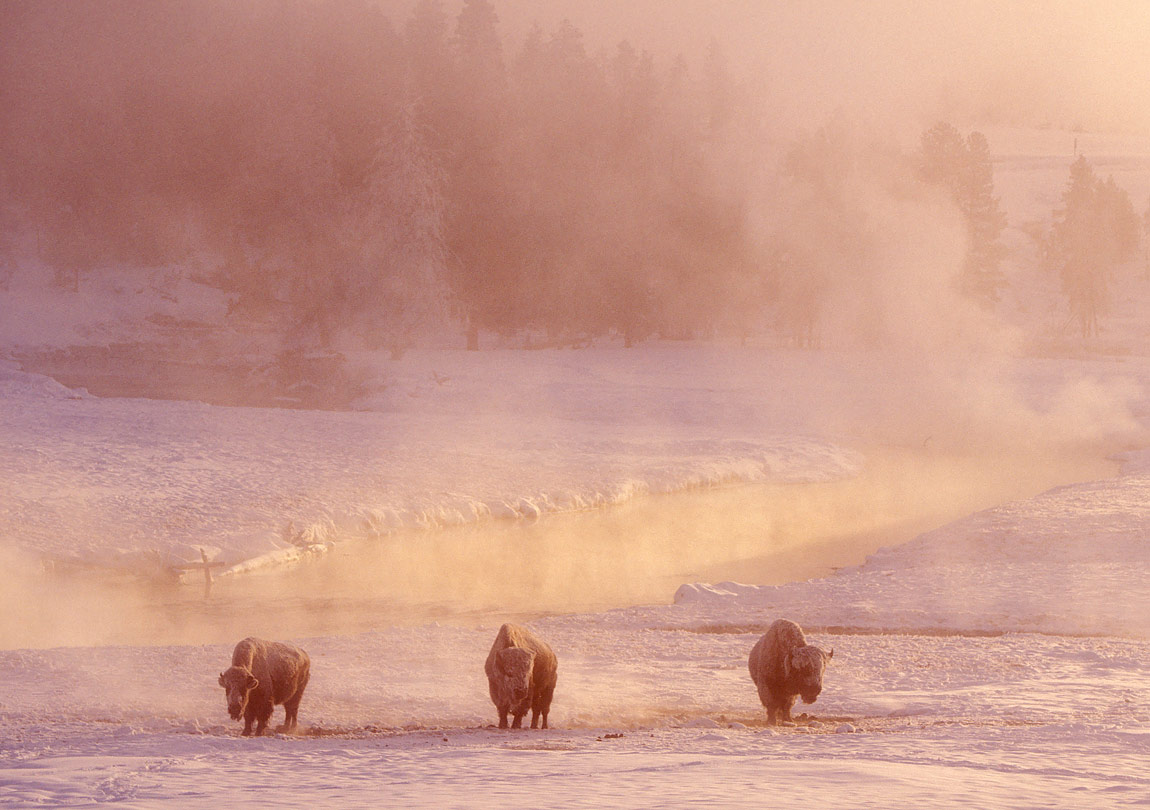Formed over millennia, the Greater Yellowstone Ecosystem, the largest area of pristine land in the continental United States, is considered to be one of the world’s finest ecosystems. At its heart is Yellowstone National Park, a world first, that surely rates as one of the finest locations for wildlife and landscape photography in North America. Lying predominantly in the western state of Wyoming, but straddling Montana and Idaho, Yellowstone contains a treasure trove of wildlife from primitive bacteria that form colourful mats around the Park’s thermal waters to the recently reintroduced grey wolf.
Yellowstone was formed by three climate-changing cataclysmic volcanic eruptions. The last, around 640,000 years ago, released more than 1,000 cubic km of rock and ash and led to the extinction of some species. The 1 km deep caldera left behind has since been mostly ‘filled-in’ by subsequent less violent eruptions, but continues to evolve into what we see today.
With over 300 geysers (two-thirds of the world total) and over 10,000 geothermal features altogether, the Yellowstone Caldera remains the largest volcanic system in North America. Add to these thousands of small earthquakes every year and you get a sense of the massive geologic forces that are taking place just beneath the surface of this ever-changing landscape. And it is this intense geothermal activity coupled with the wealth of wildlife riches that ...
Upon payment completion a yellow banner will display (Thank you. Your purchase has been approved – Please click here to proceed). That link will transfer you to a page where you can access the entire article. You will also receive an email with a link to access the article page.


